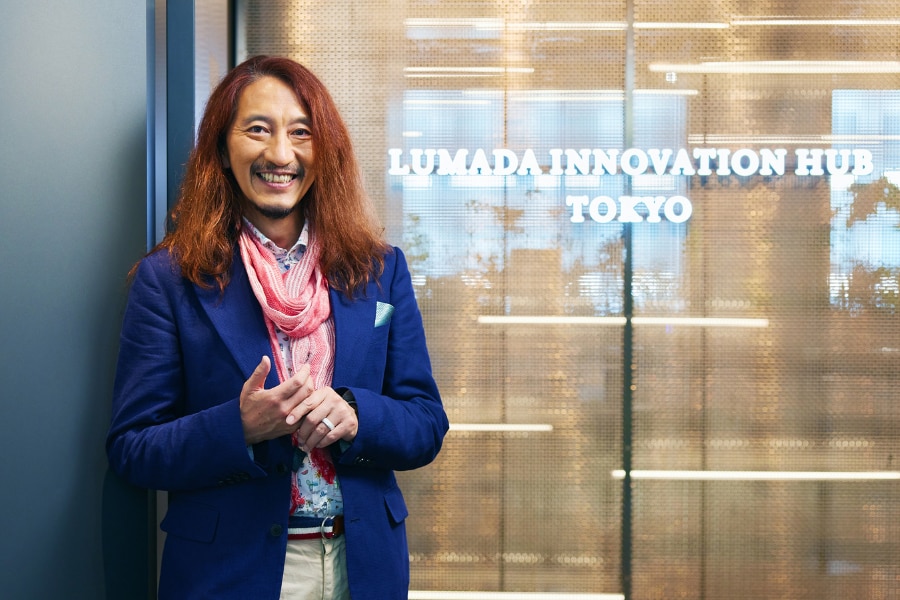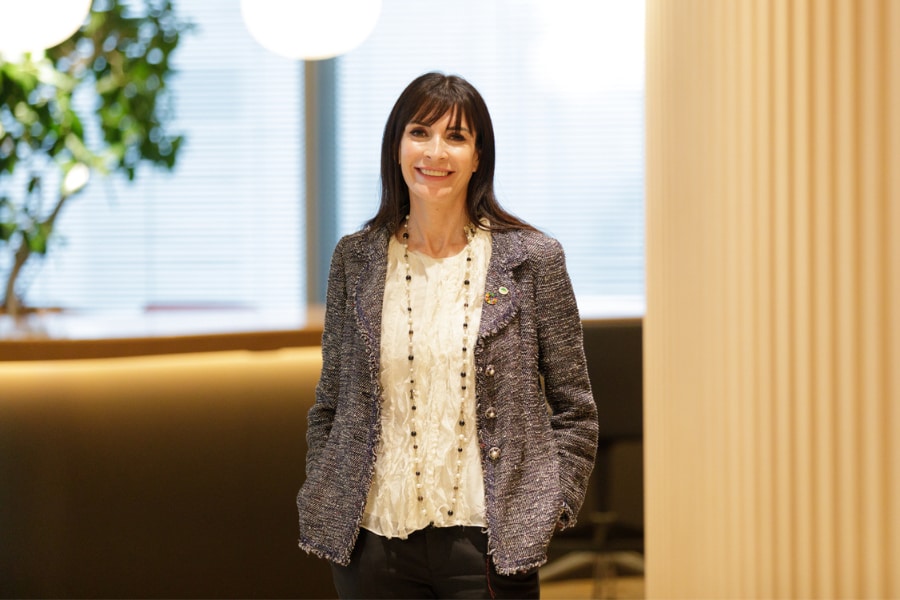Madoka Sawa: Narrowing the Gap between Idealism and Reality
Sep. 26, 2023
Hiroki Ikarashi
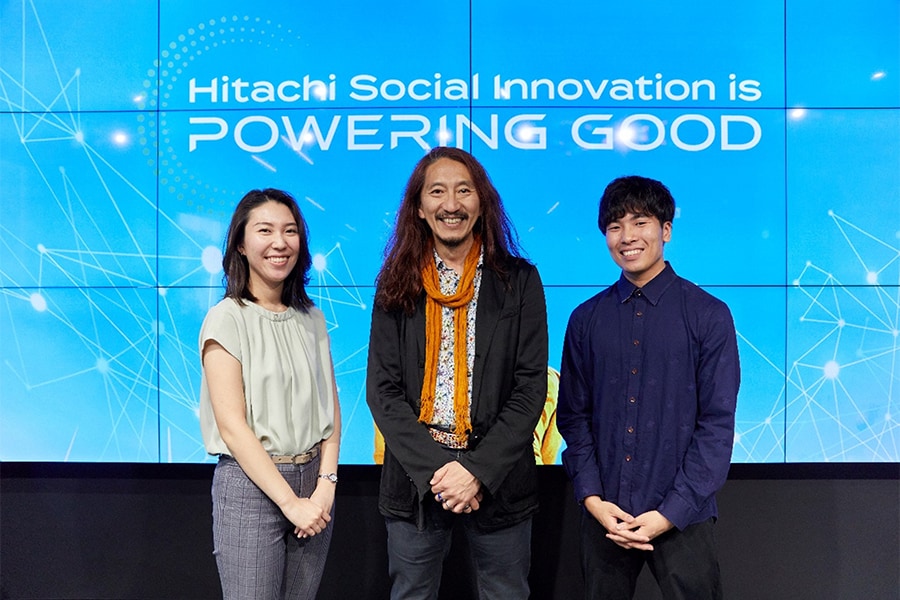
New employees who enter the workforce with ideals often find themselves conflicted when faced with the gap between their ideal job and actual job. Lisa Hayami and Takenobu Shimura, young employees at Hitachi, Ltd. who face daily challenges and conflicting emotions about their jobs, were joined by Lumada Innovation Evangelist Madoka Sawa for a discussion on how to overcome the gap between ideals and reality.
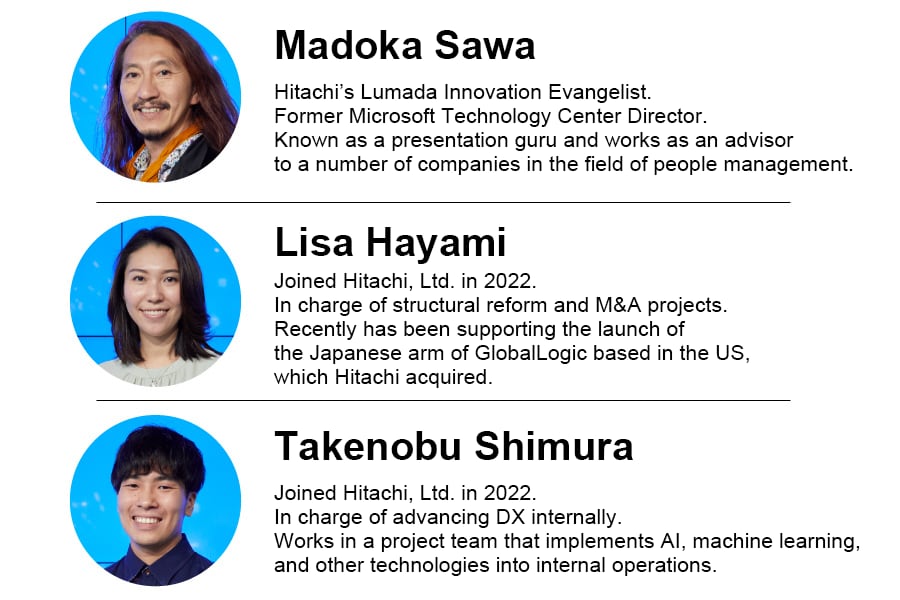
Dangers of conformity
──First of all, Mr. Sawa, what were your impressions of the "Hitachi Career Kickoff Session" held instead of the new employee induction ceremony?
Sawa: Seeing over 700 new employees gathered together was an amazing sight. However, I also felt that everyone looked the same—everyone was wearing the same suit and had the same black hair. Of course, if you look at each individual, you can tell that they are different individuals, but I thought it would be nice to have more freedom and individuality. Is there a dress code for this event?
Hayami: I joined the company in April 2022, and we were told to wear a suit or something similar.
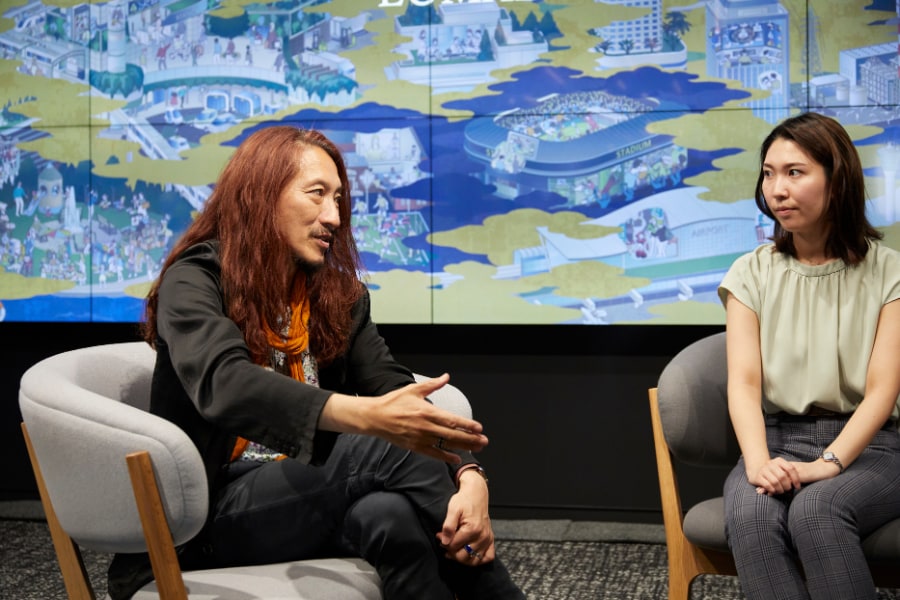
Shimura: This is also my second year with the company, but part of me thought, “This must be the image of a Hitachi employee.”
Sawa: I feel a sense of crisis with that. Visual conformity has a significant influence on human psychology, and I feel that Japanese people are particularly susceptible to it. For example, when one or two people form a line at a station platform waiting for a train, we naturally tend to line up behind them.
Business people do not need to conform so much to everyone else in their daily lives. Rather, if they do not make a conscious effort not to conform, they will become more and more devoid of their individuality. I think this is a matter of life and death for innovators. I understand that Hitachi, Ltd. has also begun to adopt a dress code-free system for employees. I think this is a big change as a first step.
Finding contributions that can be measured
──Let’s talk about the gap between ideals and reality. Mr. Shimura, I believe you feel that what you can do at work is much less than you imagined. Do you think this is due to a lack of your own ability or do you feel that you are not given enough discretion to do your work?
Shimura: Both, I think. I am now part of a project team involved in generative AI, and I feel that my skills are not up to par and that I am not living up to the expectations of my superiors.
On the other hand, I also feel that I should be entrusted with more work. I think that in order to be entrusted with more work, I should be more proactive, but also I recognize that I have not been able to do so because I still lack knowledge, and I haven’t figured out when the right time is to take action.
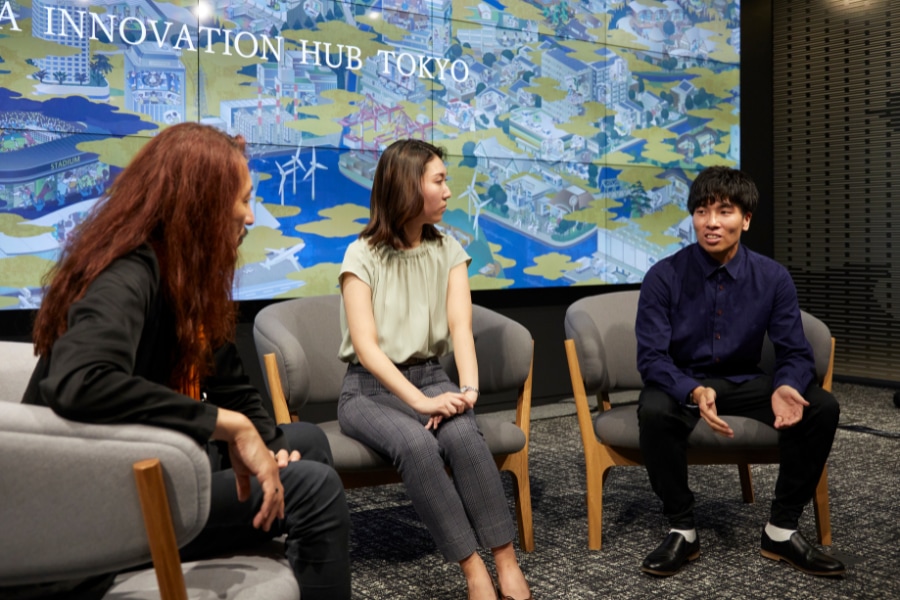
Sawa: This is a very simple problem to solve. How much information do you share with the project team?
Shimura: I used to share information with my colleagues on a regular basis, but since I’ve joined this project team, I haven’t shared as much information as I used to.
Sawa: It is important to decide how many times you are going to do it. This is because it is easy to feel that you have completed something when you can measure it. Your current problem is that your goals are vague and you feel that your contribution is not clear. So I suggest you look for a contribution that can be measured in detail. Am I correct in saying that you are familiar with generative AI? Shimura: Yes, to a certain degree.
Shimura: Yes, to a certain degree.
Sawa: Generative AI is still too big a topic. What I recommend is that you study the reactions of generative AI to a specific topic. For example, if you demonstrate a use case in which the way you ask a question to the generative AI changes the result, and if you post it on Microsoft Teams with your thoughts on it, you will be considered to have expert knowledge on generative AI within your team. If you post five times a day, you will be given the tag of someone who knows a lot about generative AI. I think you will then naturally be entrusted with more work.
Shimura: To be tagged in such a way would be great. I’ll give it a try.
Being the “first penguin”
──Ms. Hayami, what about you? What sort of gaps do you feel?
Hayami: Hitachi has been announcing its willingness to tackle the challenge of reforming the way we work. In reality, however, everyone on the project team, myself included, is busy with various projects on a daily basis, and we are desperately trying to keep up, so even though we know our rights and systems, it is difficult to use them. After all, I don't want to inconvenience anyone.
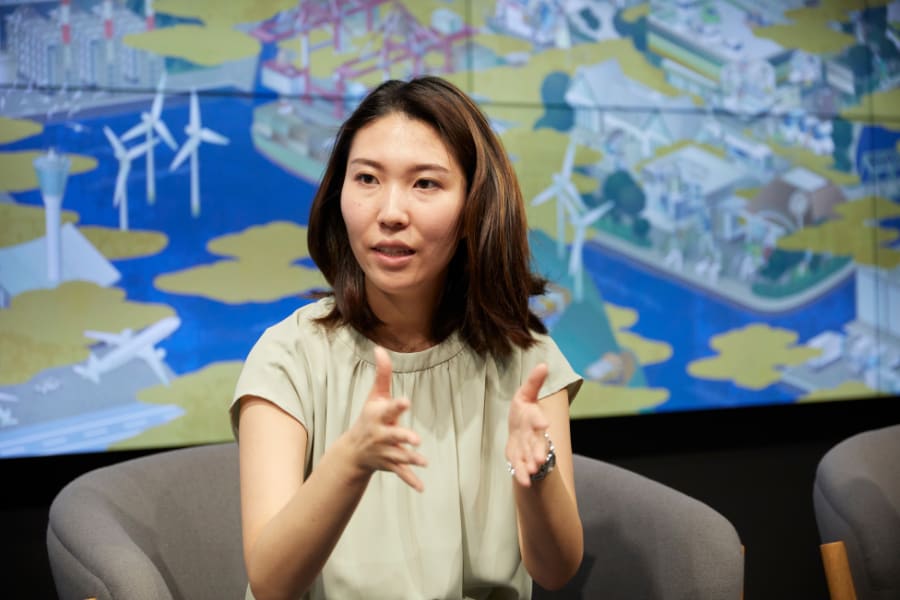
Sawa: I’m guessing you haven’t been told, “Don't use that work system because it will inconvenience other people.” So if you are wondering about using it, just use it. Worrying about something that hasn't happened, saying, “It might inconvenience others,” is a waste of time.
It is more important to take action on current issues. Be the “first penguin” (the one who takes the courageous first step, analogous to the penguin's habit of everyone following the first penguin that jumps into the water).
Don't give up just because it’s your second year at the company. Recommend the results of your trials to your close senior colleagues and get others involved. People around you will change, saying, "You did a great job," or "I wanted to use it, too.” When everyone adopts the spirit of the first penguin in this way, the company will improve dramatically.
Can the gap be closed with Lumada?
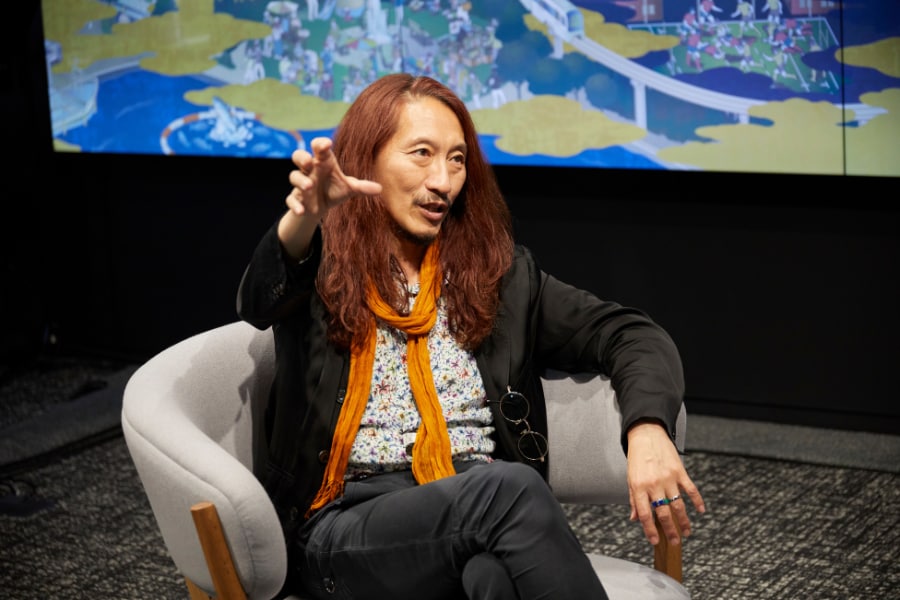
──Hitachi has set a lofty goal of leveraging digital technology to solve social issues. How can we help the organization continue to meet its goals?
Sawa: What is important is to have a shared keyword that brings the organization together in moving toward its goals. For example, there is a useful term called “Lumada,” which is the idea of devoting organizational resources to solving social issues based on data. With the shared keyword "Lumada," the entire Hitachi organization can focus on this goal.
In acting as an organization to achieve goals, barriers between departments are often noted as being a disincentive. However, that is a barrier that one creates for oneself that is not actually there. By having a keyword that reminds us of the "Lumada" goal, when we ask for help within the organization, the organization can face the goal once again.
Hayami: We have categorized the company into Lumada business and other business, and Lumada business includes work that Hitachi focuses on to achieve its goals, but if I am not involved in a focused business, how can I stay motivated?
Sawa: The problem is that we judge businesses based on whether they are good or bad, and we should not judge them as good because they are Lumada businesses or bad because they are not Lumada businesses. If another business is in the red, it is a problem, but if it is a viable business, it can continue to operate as-is. Of course, you can also think about how to change another business into a business that makes use of Lumada data.
I think it is important to accept the facts as facts and then to focus all your energy on them.
We are one team working toward the same goal
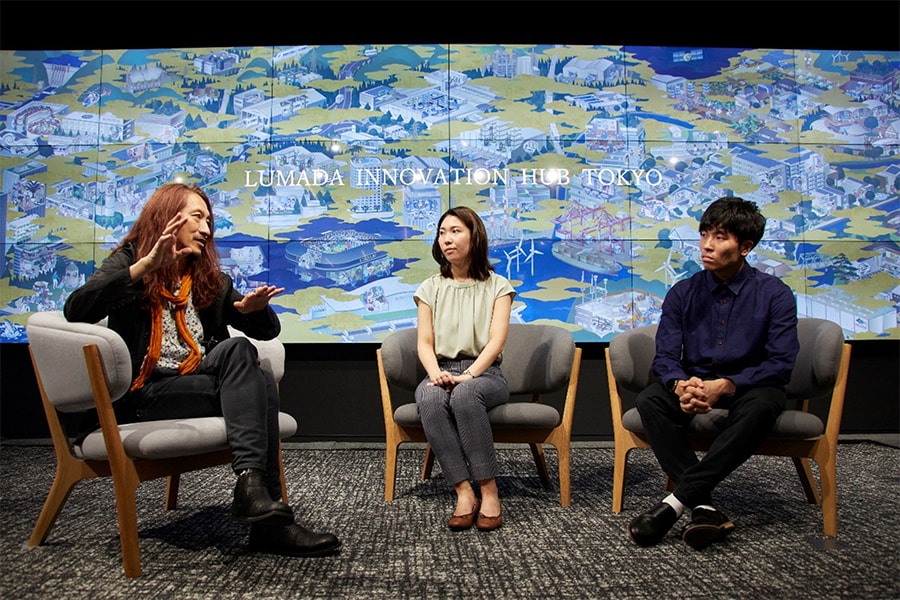
Shimura: Mr. Sawa made me feel that there was more room for bold initiatives at work than I had imagined. Maybe it seemed like there was a gap, but there really wasn't. I think I just felt like there were hurdles through my own interpretation.
Hayami: I’ve realized that I’ve also limited my thinking with certain assumptions. I’m happy to say that I’ve been able to rethink my own goals.
Sawa: I often compare the concept of three layers of management to a beach. The regular employees are the bathers, the managers are the lifesavers, and the executives are on a plane. Each layer has a different perspective. Executives have a bird’s-eye view from the plane and can quickly see changes in the weather, but they cannot go down to the beach.
Managers, on the other hand, are on a slightly elevated lookout overlooking the beach to see if anyone is drowning, and they can go down to the beach at any time. They are also responsible for communicating instructions from executives about the situation—which cannot be seen from the ground—to the regular employees, who are bathers.
As a result, managers may sometimes appear to be giving strong orders, or it may feel like they are trying to control employees too much. But the direction is the same for executives, managers, and regular employees. To use the beach analogy, the common goal is to avoid danger so that regular employees can enjoy swimming. It is important for each of us to have the belief that we all work together to achieve a common goal.
In other words, instead of being wary of opposition, we must quickly develop the perspective that we are all colleagues who will create social innovation on the same stage, called “Hitachi.” I believe that this is key to growth. I have high expectations for your growth.
Shimura and Hayami: Thank you very much for your time today.

